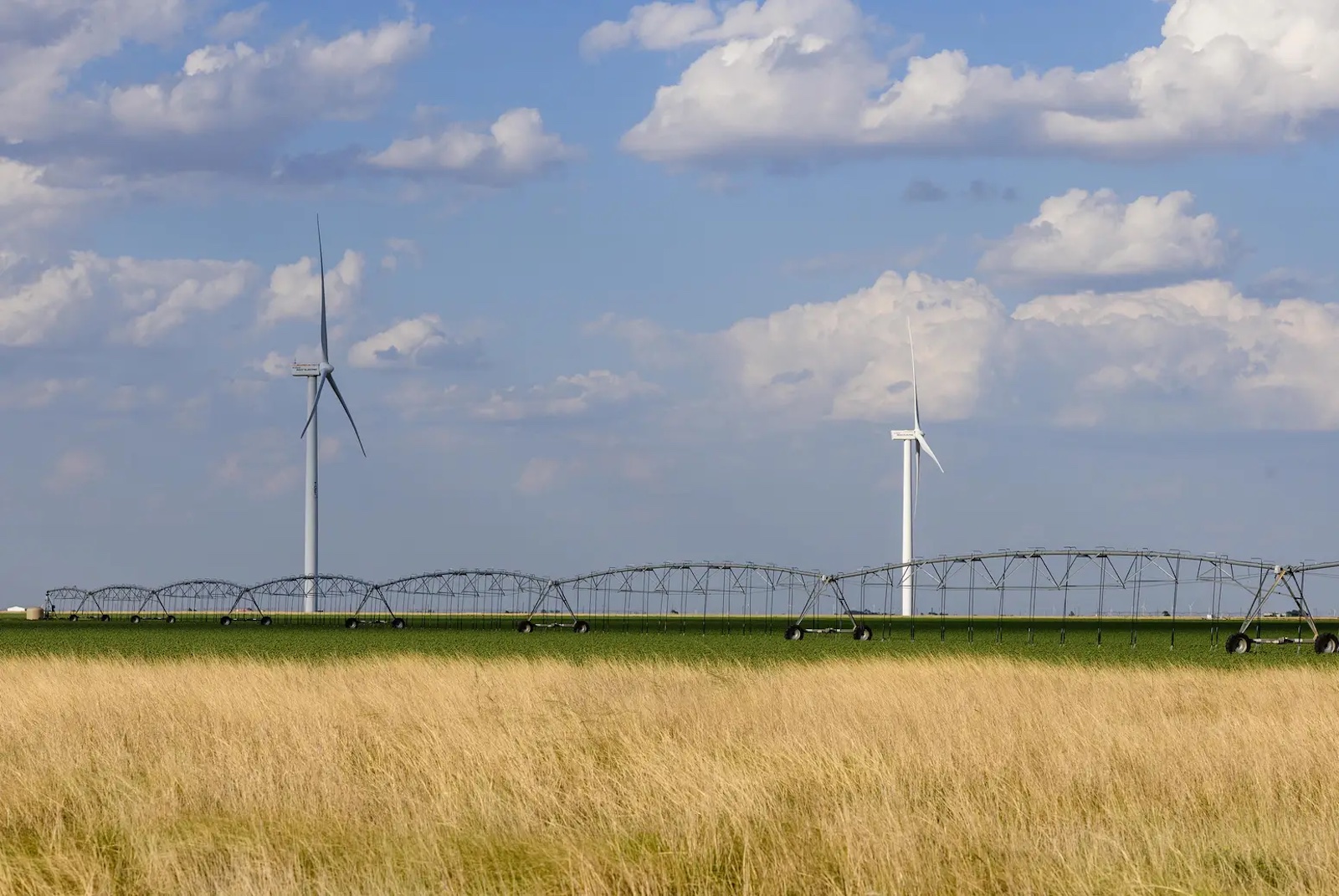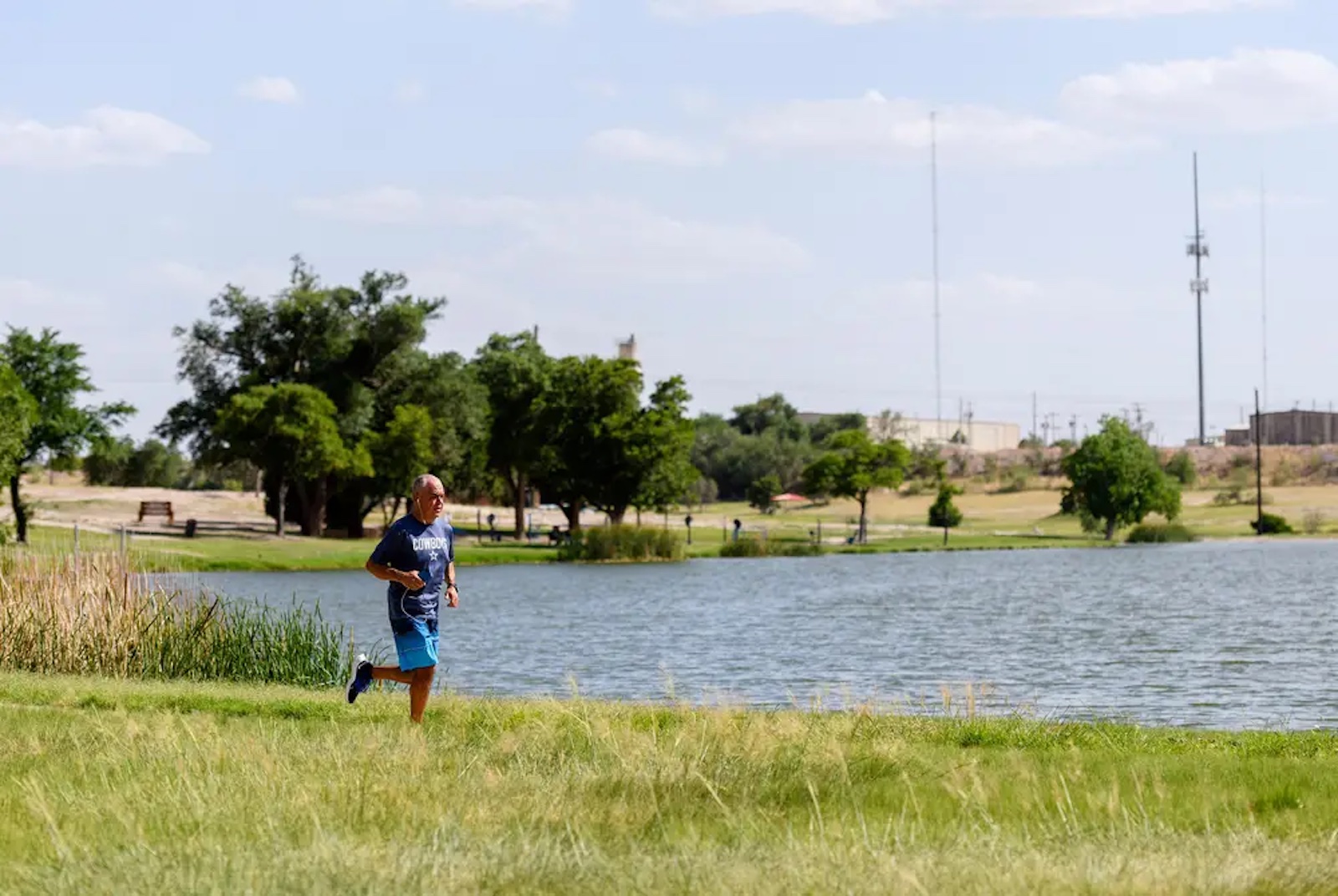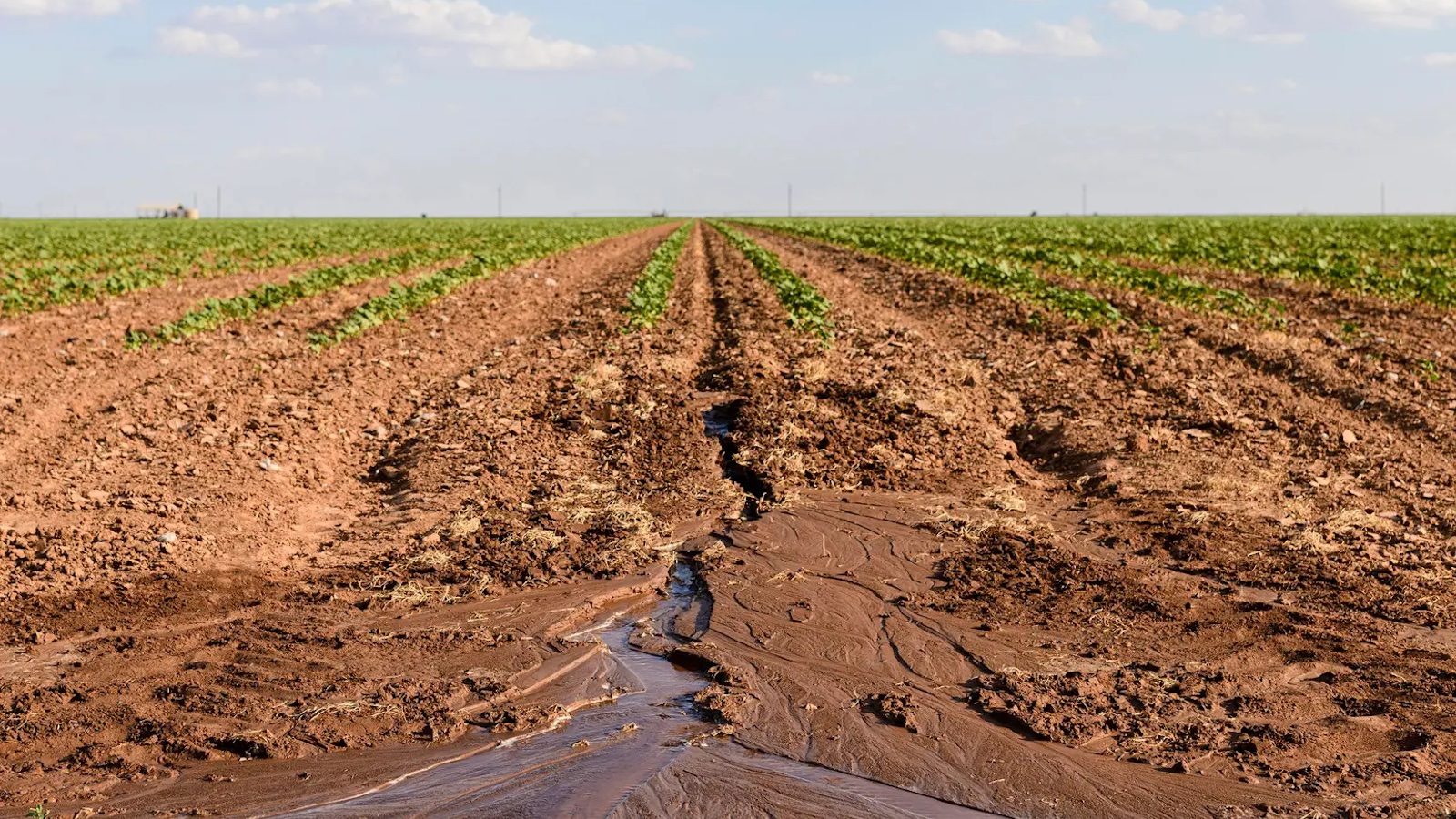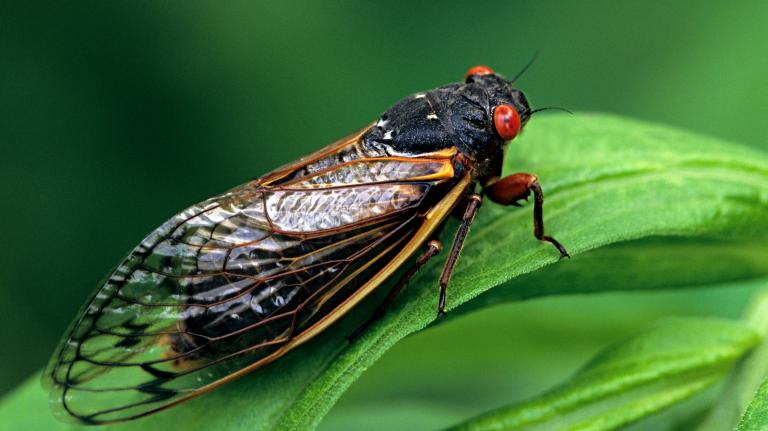This story originally appeared at the Texas Tribune. It is republished here with permission.
Lloyd Arthur can run his hand through the soil at his cotton farm and know what kind of year he’s going to have. His dry, cracked field is making him think this could be a repeat of one of the state’s worst years.
“We can’t outfox what Mother Nature sends us,” said Arthur, whose farm is about 30 miles outside of Lubbock. “2022 has been one for the record books. We’ve always compared years to 2011, as far as droughts and whatnot, but 2022 is worse. We don’t have any underground moisture.”
According to the United States Drought Monitor, more than 80 percent of Texas has been facing drought conditions most of the year, and some areas for much longer. Prolonged drought can lead to crop loss, heat stress, and limited feed availability for livestock, as well as increased risk of wildfires.

The drought has been affecting West Texas since last August. There has been some rainfall in recent weeks, but not enough. After receiving about three inches of rain in May, Ralls saw less than an inch in May, a big difference from the two inches of rain the area receives on average in June.
“Planting time came and we got a few rains, but they were short-lived rain events,” Arthur said. “It kind of gave us a little false hope. We were so dry, with no moisture underneath, that a lot of the rain did run off.”
Arthur said there is still a chance for a decent crop this year — there are areas of his farm where crops are standing, including a little area on his dryland patch. He uses an app to monitor where he should focus his irrigation, but he is still wary of investing in a crop that may not make it past the summer.
“At this point, we’re at triple digits, 20-miles-per-hour winds with humidity — there’s no way this crop can sustain this much longer,” Arthur said. “All of my irrigated [crop], in the heat the last few days that we’ve had, is stressed. We do have some places that look good, but only Mother Nature and time will tell what’s going to happen with that.”
New data from the National Oceanic and Atmospheric Administration shows there is a reason for Texans to be concerned about the weather this year: May of this year tied for the warmest May on record in the state, along with May 2018.
The early heat was followed by more drought, which has led officials to say this year could be as bad as, if not worse than, the historic 2011 drought — the driest year on record for Texas that caused billions of dollars in losses. According to Texas A&M AgriLife Extension Service, the total cost of crop and livestock losses was estimated at $7.62 billion. This was due to low crop yields, increased use of water irrigation systems, and loss of pastures.
“It’s a valid fear right now,” said Victor Murphy, climate service program manager for NOAA. “I’ve been holding off saying that for a while, because parts of the state had good rainfall in May. But seeing June be as dry as it’s been, we’re actually running ahead of 2011 right now.”
The drought is widespread in West Texas. According to Murphy, Midland had its driest period on record from September 2021 to May 31, when it received only 8 percent of its normal rainfall. The second-driest was in 2011.
In the same time period, Lubbock has experienced its seventh-driest time on record overall, but the driest since 2011. Lubbock also had six days reach 100 degrees Fahrenheit or higher from March through May — tying for the third-highest number of 100-degree F days in those months in Lubbock’s records, going back to 1914.
Murphy said when dry conditions combine with heat, it creates a feedback cycle that can be hard to get out of. The cycle can evaporate precipitation before it can reach the soil, causing a critical impact on agriculture. Murphy said dryland crops would not be able to survive and would need irrigation.
“If you go long enough without any rainfall, the ground becomes bone dry,” Murphy said. “So whatever heat comes down, it just radiates back up. I think the state of Texas as a whole right now is very susceptible to that, and that’s what happened in 2011 too.”
The feedback cycle is part of why the soil at Arthur’s farm in Ralls couldn’t retain the rainfall. There was enough rain to get this year’s cotton crop started, including some of his dryland crop which is not irrigated and dependent on rainfall. However, he’s not sure if it can make it through a dry summer, with high temperatures causing water loss, even with irrigation.
“We lose a lot of valuable irrigation water to evaporation here in a normal year,” Arthur explained. “With this dry heat and low humidity, we’ll lose even more than that. So that’s where I’m going to be cautious and go by a field-by-field basis.”

The harsh weather conditions could cause major hiccups for the region’s highest cash crop. According to Plains Cotton Growers, the Texas High Plains area produces about 66 percent of the state’s cotton and cottonseed, and about 30 percent for the U.S.
Arthur said he and many other producers in the region depended on crop insurance after the 2011 drought. Crop insurance covers crop losses caused by natural events, including drought and destructive weather. According to the U.S. Department of Agriculture, more than $1.65 billion covered the losses in 2011, with much of that being distributed in West Texas.
Even with the insurance, it took a long time to recover from 2011. Arthur is worried it could be the same way this year, especially as inputs like fertilizer, water pumping and seed are higher from inflation.
“We had to rely on crop insurance, but 2012 and 2013 were not much better, we didn’t really start having a normal rainfall until the 2014 crop,” Arthur explained. “But now, we started off the year with no moisture, and our expenses are way larger. Some of our inputs have doubled and even tripled, so there’s going to be a larger expense for irrigation with those fuel costs and because we’re facing inflation. So people will be evaluating the cost.”
In the Panhandle, producers are already weighing their options when it comes to replanting lost acres. According to NOAA, the Amarillo area was on track to have its third-driest year on record until it had rainfall in early June. However, the rainfall was too intense for budding crops.
“Many of the recent rainfall events brought hail, so we have tens of thousands of acres that have been hailed out. It’s almost a Catch-22,” said Jourdan Bell, an agronomist for Texas A&M AgriLife Extension Center at Amarillo. “Then unfortunately, depending on where producers were, many of these areas received a sprinkle of rain and heavy winds, so we’ve had a lot of wind injury and fields that are blown out.”
Bell said many areas of the Panhandle were receiving two inches of rain in 30 minutes, but because of how dry the land already was, they experienced water runoff. On top of that, she said, only the topsoil retained moisture, so the soil below is still dry.
“If we don’t have the soil moisture, and we don’t have the rainfall, we’re not going to make it through the season,” Bell said. “Even with irrigation, just because we apply an inch doesn’t mean that is automatically available for the crop. We have to meet the plant demands plus the environment’s demands.”
State climatologist John Nielsen-Gammon said the longer the drought goes on, the more water resources will be affected.
”As we enter the heat of the summer, there will be greater water demand, both in agriculture and urban use,” he explained. “That can cause greater groundwater depletion and create issues as wells start running dry.”

Data from the Texas Water Development Board shows that the state’s reservoirs are about 77 percent full. However, most of the fuller reservoirs are closer to Central and far East Texas. Aside from Lake Alan Henry in Lubbock County, reservoir levels in West Texas range from one percent to 32 percent full.
“It takes a prolonged period of wet weather to start producing significant runoff to begin replenishing reservoirs, or alternatively a flood can do it,” Nielsen-Gammon said. “It’s actually a saying here in Texas, that droughts end with floods.”
The Texas Tribune is a nonpartisan, nonprofit media organization that informs Texans — and engages with them – about public policy, politics, government and statewide issues.



